
May
1989
FORM:
129
216
~1
Millerfi
Effective
With
Serial
No.
JJ403359
MODEL
ECONO
4
'~7\
~
~L~
OWNERS
MANUAL
Read
and
understand
the
entire
contents
of
both
this
Miller
Electric
Mfg.Co.
manual
and
the
power
source
manual
used
with
this
unit,
with
special
AM~I~G,~L~d
CO~Danv
emphasis
on
the
safety
material
throughout
both
manuals,
before
in-
~o.
Box
1079
stalling,
operating,
or
maintaining
this
equipment.
This
unit
and
these
instructions
are
for
use
only
by
persons
trained
and
experienced
in
the
Appleton,
WI
54912
USA
Tel.
414-734-9821
safe
operation
of
welding
equipment.
Do
not
allow
untrained
persons
to
.
install,
operate,
or
maintain
this
unit.
Contact
your
distributor
if
you
do
not
fully
understand
these
instructions.
PRINTED
IN
U.S.A.
ADDmONAL
COPY
PRICE
25
CENTS

LIMITED
WARRANTY
EFFECTIVE:
MARCH
159
1989
This
warranty
supersedes
all
previous
MILLER
warranties
and
is
exciusivewith
no
other
guarantees
or
warranties
expressed
or
implied.
LIMITED
WARRANTY.-Subjectto
the
terms
and
conditions
hereof,
Miller
Electric
Mfg.
Co..
Appleton,
Wisconsin
warrants
to
its
Distributor/Dealer
that
aH
new
and
unused
Equipment
fur
nished
by
Miller
is
free
from
defect
in
workmanship
andmaterial
as
of
the
time
and
place
of
delivery
by
Miller.
No
warranty
is
made
by
Miller
with
respect
to
engines,
trade
accessories
or
other
items
manufactured
by
others.
Such
engines,
trade
ac
cessories
and
other items
are
sold
subject
to
the
warranties
of
their
respective
manufacturers,
if
any.
All
engines
are
war
ranted
by
their
manufacturer
for
one
year
from
date
of
originai
purchase,
except
Tecumseh
and
Onan
engines
which
have
a
two
year
warranty.
Except
as
specified
below,
Millers
warranty
does
not
apply
to
components
having
normal
useful
life
of
less
than
one
(1)
year,
such
as
spot
welder
tips,
relay
and
contactor
points,
MILLER
MATIC
parts
that
come
in
contact
with
the
welding
wire
includ
ing
nozzles
and
nozzle
insulators
where
failure
does
not
result
from
defect
in
workmanship
or
material.
Miller
shall
be
required
to
honor
warranty
claims
on
warranted
Equipment
in
the
event
of
failure
resulting
from
a
defect
within
the
following
periods
from
the
date
of
delivery
of
Equipment
to
the
original
user
1.
Arc
welders,
power
sources,
robots,
and
1
year
components
2.
Loadbanks
1
year
3.
Original
main
power
rectifiers
3
years
(labor
1
year
only)
4.
All
welding
guns,
feeder/guns
and
torches
90
days
5.
All
other
Millermatic
Feeders
1
year
6.
Replacement
or
repair
parts,
exclusive
of
labor
60
days
7.
Batteries
6
months
provided
that
Miller
is
notified
in
writing
within
thirty
(30)
days
of
the
date
of
such
failure.
As
a
matter
of
general
policy
only,
Miller
may
honor
claims
submitted
by
the
original
user
within
the
foregoing
periods.
In
the
case
of
Millers
breach
of
warranty
or
any
other
duty
with
respect
to
the
quality
of
any
goods,
the
exclusive
remedies
therefore
shall
be.
at
Millers
option
(1)
repair
or
(2)
replacement
or,
where
authorized
in
writing
by
Miller
in
appropriate
cases,
(3)
the
reasonable
cost
of
repair
or
replacement
at
an
author
ized
Miller
service
station
or
(4)
payment
of
or
credit
for
the
pur
chase
price
(less
reasonable
depreciation
based
upon
actual
use)
upon
return
of
the
goods
at
Customers
risk
and
expense.
MILLERs
option
of
repair
or
replacement
will
be
F.O.B.,
Fac
tory
at
Appleton,
Wisconsin,
or
F.O.B.
at
a
MILLER
authorized
service
facility,
therefore,
no
compensation
for
transportation
costs
of
any
kind
will
be
allowed.
Upon
receipt
of
notice
of
ap
parent
defect
or
failure,
Miller
shall
instruct
the
claimant
on
the
warranty
claim
procedures
to
be
followed.
ANY
EXPRESS
WARRANTY
NOT
PROVIDED
HEREIN
AND
ANY
IMPLIED
WARRANTY,
GUARANTY
OR
REPRE
SENTATION
AS
TO
PERFORMANCE,
AND ANY
REMEDY
FOR
BREACH
OF
CONTRACT
WHICH,
BUT
FOR
THIS
PROVISION,
MIGHT
ARISE
BY
IMPLICATION,
OPERATION
OF
LAW,
CUSTOM
OF
TRADE
OR
COURSE
OF
DEALING,
INCLUDING
ANY
IMPLIED
WARRANTY
OF
MERCHAN
TABILITY
OR
OF
FITNESS
FOR
PARTICULAR
PURPOSE,
WITH
RESPECT
TO
ANY
AND
ALL
EQUIPMENT
FUR
NISHED
BY
MILLER
IS
EXCLUDED
AND
DISCLAIMED
BY
MILLER.
EXCEPT
AS
EXPRESSLY
PROVIDED
BY
MILLER
IN
WRITING,
MILLER
PRODUCTS
ARE
INTENDED
FOR
ULTI
MATE
PURCHASE
BY
COMMERCIAL/iNDUSTRIAL
USERS
AND
FOR
OPERATION
BY
PERSONS
TRAINED
AND
EXPE
RIENCED
IN
THE USE
AND
MAINTENANCE
OF
WELDING
EQUIPMENT
AND
NOT
FOR
CONSUMERS
OR
CON
SUMER
USE.
MILLERS
WARRANTIES
DO
NOT
EXTEND
TO,
AND
NO
RESELLER
IS
AUTHORIZED
TO
EXTEND
MILLERS
WARRANTIES
TO,
ANY
CONSUMER.
_1
Ii
RECEIVING-HANDLING
Before
unpacking
equipment,
check
carton
for
any
damage
that
may
have
occurred
during
shipment.
File
any
claims
for
loss
or
damage
with
the
delivering
car
rier.
Assistance
for
filing
or
settling
claims
may
be
ob
tained
from
the
distributor
and/or
the
equipment
manu
facturers
Transportation
Department.
When
requesting
intormation
about
this
equipment,
al
ways
provide
tho
Model
Description
and
Serial
or
Style
Use
the
following
spaces
to
record
the
Model
Designa
tion
and
Serial
or
Style
Number
of
your
unit.
The
infor
mation
is
located
on
the
data
card
or
the
nameplate.
Model
__________
Serial
or
Style
No.
Date
of
Purchase
Number.

4.3.
INSTALLING
WELDING
GENERATOR
a
CAUTION:
UNCONTROLLED
TILTING
OF
TRAILER
can
resuLt
In
personal
Injury
or
equipment
damage.
Use
equipmentof
adequate
capacity
to
lift
the
unit.
Install
welding
generator
onto
trailer
with
engine
end
toward
hitch
end
of
trailer.
Distribute
weight
so
that
trailer
tongue
weight
is
approximately
10%
of
the
gross
trailer
weight.
1.
Align
mounting
holes
in
welding
generator
with
proper
holes
in
trailer
frame.
2.
Secure
generator
to
frame
with
5/8
in.
(16
mm)
grade
5
hardware,
and
tighten
hardware
to
160
ft
lbs
(217
Nm).
SECTION
5-
OPERATION
AND
MAINTENANCE
a
WARNING:
UNSAFE
TOWING
SPEED
can
cause
loss
of
stability
of
trailer
and
towing
vehicle
which
can
result
In
serious
personal
Injury,
and
equipment
damage.
Do
not
exceed
35
mph
(56
Km/h)
towing
speed
on
smooth
terrain.
On
rough
or
uneven
terrain
towing
speed
must
be
reduced
accordingly.
5-1.
TRAILER-SUPPORTiNG
JACK
The
trailer-supporting
jack,
located
on
the
front,
left
cor
ner
of
the
trailer
chassis,
supports
the
trailer
in
a
hon
zontal
position.
To
use
the
trailer-supporting
jack,
lower
the
jack
to
its
vertical
position
as
follows:
1.
Pull
the
spring-loaded
jack
securing
pin
until
the
jack
is
free
to
pivot.
2.
Pivot
the
jack
down
to
the
vertical
position.
The
jack
securing
pin
should
lock
the
jack
in
a
vertical
posi
tion.
IMPORTANT:
Rotating
the
jack
handle
clockwise
will
raise
the
trailer
tongue.
Rotating
the
handle
counter
clockwise
will
lower
the
trailer
tongue.
3.
When
not
in
use,
return
the
jack
to
its
horizontal
position
by
pulling
the
jack
securing
pin
until
the
jack
is
I
ree
to
pivot.
5-2.
LUBRICATION
IMPORTANT:
Whenever
performing
any
maintenance,
lubrication
or
adjustment,
watch
for
any
indication
of
excessive
wear,
damage
or
malfunction.
Check
for
free
rotation
of
assemblies
mounted
on
bushings
or
bear
ings.
Do
not
operate
the
trailer
if
any
component
is
damaged
or
malfunctioning.
A.
General
Lubricate
all
moving
parts
on
the
trailer
at
least
once
each
year
using
SAE-20W
oil.
If
trailer
is
exposed
to
ele
ments
or
frequent
off-the-road
use,
lubricate
trailer
parts
more
often.
B.
Wheel
Bearings
Check
wheel
bearing
every
12,000
miles
or
once
a
year,
and
repack
bearings
if
necessary.
Bearings
should
be
repacked
with
a
good
quality
lithium-based
extreme
pressure
grease.
090
732
087
638
089
139
605
783
010911
601
851
SECTION
6
PARTS
LIST
BE
SURE
TO
PROVIDE
MODEL
AND
SERIAL
NUMBER
WHEN
ORDERING
REPLACEMENT
PARTS.
Part
No.
Description
Quantity
TIRE
&
RIM,
480/400-12
tubeless
JACK,
swivel
2000/5000
lb
LABEL,
warning
4WST
trailer
SCREW,
cap
-
hex
hd
5/8-18
x
2
WASHER,
fIat
5/8
NUT,
self-locking
hex
5/8-18
4
I
1
4
4
4
129
216
Page
5


SECTION
2-
SAFETY
PRECAUTIONS
AND
SIGNAL
WORDS
2.1.
GENERAL
INFORMATION
AND
SAFETY
A.
General
Information
presented
in
this
manual
and
on
various
la
bels,
tags,
and
plates
on
the
unit
pertains
to
equipment
design,
installation,
operation,
maintenance,
and
troubleshooting
which
should
be
read,
understood,
and
followed
for
the
safe
and
effective
use
of
this
equipment.
B
.
Safety
The
installation,
operation,
maintenance,
and
trouble
shooting
of
arc
welding
equipment
requires
practices
and
procedures
which
ensure
personal
safety
and
the
safety
of
others.
Therefore,
this
equipment
is
to
be
in
stalled,
operated,
and
maintained
only
by
qualified
per
sons
in
accordance
with
this
manual
and
all
applicable
codes.
2-2.
SAFETY
ALERT
SYMBOL
AND
SIGNAL
WORDS
The
following
safety
alert
symbol
and
signal
words
are
used
throughout
this
manual
to
call
attention
to
and
identify
different
levels
of
hazard
and
special
instruc
tions.
4~
This
safety
alert
symbol
is
used
with
the
signal
words
WARNING
and
CAUTION
to
call
atten
tionto
the
safety
statements.
4A
WARNING
statements
identify
procedures
or
practices
which
must
be
followed
to
avoid
seri
ous
personal
injury
or
loss
of
life.
4A
CAUTION
statements
identify
procedures
or
practices
which
must
be
followed
to
avoid
minor
personal
injury
or
damage
to
this
equipment.
IMPORTANT
statements
identify
special
instructions
necessary
for
the
most
efficient
operation
of
this
equip
ment.
SE~T1ON
3
SPECIFICATIONS
Table
3.1.
SpecifIcatIons
Gross
Axle
Weight
Rating
Gross
Vehicle
Weight
Rating
rrack
(center
to
center
of
tires)
Road
Clearance
Height
Of
Bed
Overall
Length
Overall
Width
Standard
Tires
Shipping
Weight
950
lbs.
(431
kg)
For
FrontlRear
1900
lbs.
(862
kg)
57
in.
(1448
mm)
9
in.
(229
mm)
21
in.
(533
mm)
111
in.
(282
mm)
63
in.
(1600
mm)
480/400
10
in.
(254
mm)
283
lbs.
(128
kg)
3-1.
DESCRIPTION
The
Econo
4
is
a
four-wheel,
tandem
axle
trailer.
The
Lunette
Eye
Hitch
Trailer-Supporting
Jack
trailer
is
designed
for
off-the-road
use
and
is
equipped
with
the
following
features:
Equalizer
Assembly
SECTION
4INSTALLATION
AND
RELOCATION
IMPORTANT:
The
word
FRONT,
when
used
with
refer
ence
to
trailer,
means
the
tongue/hitch
end
of
trailer.
4-1.
INSTALLING
TRAILER
TO
TOWING
VEHICLE
Use
equipmentof
adequate
capacity
to
lit
the
unit.
Use
adequate
blocks
or
lifting
device
to
sup
port
hitch
end
while
pivoting
trailer
jack
into
posi
tion.
(see
Section
5-1).
The
lunette
eye
hitch,
located
on
front
of
trailer,
is
used
to
connect
trailer
to
the
towing
vehicle.
Make
connec
tions
as
follows:
1.
Use
jack
to
support
trailer
as
instructed
in
Section
5-1.
2.
Install
and
secure
trailer
hitch
onto
towing
vehicle.
3.
Cross
customer-supplied
safety
chains
one
over
the
other,
and
attach
safety
chains
to
towing
vehi
cle;
safety
chains
must
be
BELOW
hitch.
4.
Release
trailer-supporting
jack
as
instructed
in
Sec
tion5-1.
a
WARNING:
FALLING
EQUIPMENT
can
cause
serious
personal
Injury
and
equIp
ment
damage.
0,
129
216
Page
3

The
equalizer
assembly
distributes
weight
applied
to
the
trailer
to
the
full
length
of
the
trailer
frame.
Without
the
equalizer
assembly,
the
trailer
may
be
damaged
by
excessive
weight
applied
to
one
part
of
the
trailerframe.
To
assemble
equalizer,
proceed
as
follow:
1.
Assemble
equalizer
as
shown
in
Figure
4-1.
2.
Connect
supplied
shackles
to
front
and
rear
brack
ets
(see
Figure
4-1).
3.
Install
supplied
wheels
onto
hubs
(see
Figure
4-1).
Block
wheels
as
necessary
to
keep
trailerfrom
mov
ing.
4.
Remove
blocks.
I
Equalizer
Assembly
\
4-2.
INSTALLING
EQUALIZER
ASSEMBLY
(Figure
4-1)
4A
WARNING:
FALLING
EQUIPMENT
can
cause
serious
personal
Injury
and
equip
ment
damage.
Use
equipmentof
adequate
capacity
to
lift
the
unit.
Use
adequate
blocks
or
lifting
device
to
sup
port
hitch
end
while
pivoting
trailer
jack
into
posi
tion
(see
Section
5-1).
Use
trailer
jack
to
obtain
desired
height
and
to
support
tongue
weight
while
instalilng
equalizer
assembly.
Jack
Crank
Pull
pin
to
pivot
jack.
Front
/
Shakie
Bracket
FIgure
4-1.
Trailer
Assembly
Rear
Shackle
Bracket
129
216
Page
4

SECTION
1-
SAFETY
1-1.
GENERAL
Before
using
this
trailer,
several
matters
should
be
con
sidered
so
that
safe
arrival
of
equipment
at
the
work
site
is
not
left
to
chance.
Towing
any
mobile
unit
requires
awareness
of
the
situation
and
a
trailer
fully
prepared
and
connected.
When
towing,
it
takes
longer
to
start,
stop,
and
pass.
Also,
turning
and
backing
may
cause
unforseen
difficulties.
It
is
recommended
that
the
entire
subject
of
towing
be
given
considerable
thought
before
the
actual
operation
takes
place.
Additionally,
any
trailer
used
on
a
public
highway
is
sub
ject
to
all
state
and
federal
regulations
governing
trailer
usage.
Should
the
trailer
be
used
only
on
private
prop
erty,
it
may
not
be
necessalyto
comply
with
existing
leg
islation.
If
in
doubt,
check
state
and
federal
laws,
or
con
tact
the
local
law
enforcement
agency.
1-2.
WEIGHT
A
nameplate,
located
on
the
right
front
frame
member
(when
facing
hitch),
is
provided
on
this
trailer.
If
a
name
plate
is
not
present
or
has
been
defaced,
consult
the
Owners
Manual
for
weight
specifications.
This
name
plate
(or
Owners
Manual)
gives
the
maximum
weight-,
carrying
capacity
for
the
complete
trailer
and
for
each
axle
(GVWR
and
GAWR)
for
this
particular
trailer.
The.
designation
GVWR
means
Gross
Vehicle
Weight
Rat~
ing
and
is
the
maximum
the
trailer
can
weigh
with
the
en
gine
driven
generator
and
all
associated
equipment
(tools,
cables,
gas
cylinder,
etc.)
on
board.
The
designa
tion
GAWR
means
Gross
Axle
Weight
Rating
and
is
the
maximum
load-bearing
capacity
of
the
axle(s)
on
this
particular
trailer.
It
is
very
important
not
to
overload
the
trailer.
It
is
also
important
to
know
the
trailers
gross
weight.
The
gross
weight
may
be
determined
by
weigh
ing
the
trailer
at
a
local
material
or
fuel
yard.
Gross
trailer
weight
should
be
taken
into
consideration
when
select
ing
the
towing
vehicle.
Holes
are
provided
in
the
frame
of
the
trailer
for
mount
ing
an
engine
driven
generator.
AA
CAUTION:
UNCONTROLLED
TILTING
OF
TRAILER
can
result
In
personal
Injury
or
equIpment
damage.
Install
generator
onto
trailer
with
engine
end
toward
hitch
end
of
trailer.
Distribute
weight
so
that
trailer
tongue
weight
is
approximately
10%
of
the
gross
trailer
weight.
1-3.
TONGUE
WEIGHT
Tongue
weight
is
defined
as
the
amount
of
the
trailer
weight
that
actually
rests
on
the
hitch
of
the
towing
vehi
cle.
Recognized
standards
recommend
that
the
tongue
weight
of
this
trailer
be
approximately
10%
of
the
gross
trailer
weight.
It
is
important
to
maintain
this
tongue
weight.
See
Table
1-1
for
specific
information
on
tongue
weights.
The
tongue
weight
can
often
be
adjusted
by
re
locating
some
of
ihe
associated
equipment
on
the
trailer.
Table
1-1.
MaxImum
Recommended
Tongue
Weights
By
Trailer
Classification
For
Trailer
DesIgn*
Trailer
Class
Maximum
Gross
Trailer
Weight,
lbs.
(kg)
Maximum
Static
Tonaue
Loads,
lbs.
(N)
Recommended
Type
of
Hitch
1
tJj)
to
2000
p
to
910)
200
(890)
300
(1334)
Weiaht-Carrying
WeigEt-Distribuflng
2
2000
to
3500
(910
to
1590)
300
(1
334~
500
(2224S
Weiaht-Carrying
Weigfit-Distribuflng
3500
tO
5000
(1590
to
2270)
15%
G1W~
Weight-Distributing
5000
to
10,000
(2270
to
4540)
15%
Max.
GTW
Weight-Distributing
8y
permission.
From
SAE
Handbook
(1974).
Gross
Trailer
Weight.
Tongue
weight
can
be
determined
by
weighing
the
tongue
on
a
scale
of
adequate
capacity.
For
best
accu
racy,
be
sure
that
the
trailer
is
level
when
taking
the
scale
reading.
The
proper
tongue
weight
and
appropriate
vehicle
speed
(never
above
45mph
or72
km/h).will
help
consid
erably
in
preventing
the
condition
known
as
fishtailing.
Fishtailing
is
a
swaying
motion
in
the
trailer
which
can
become
so
pronounced
that
the
trailer
and
towing
vehi
cle
may
be
physically
flipped
over.
Regardless
of
the
de
gree,
fishtailing
is
always
potentially
dangerous
be
cause
of
the
loss
of
directional
stability.
Afthough
tongue
weight
and
speed
considerations
are
prime
factors
in
fishtailing,
other
areas
such
as
poor
weight
distribution,
improper
wheel
alignment,
dam
aged
suspension
components,
and
the
like,
should
not
be
overlooked.
1-4.
HITCHES
The
appropriate
hitch,
properly
installed
to
the
towing
vehicle,
is
vitally
important
for
towing
safety
(see
Table
1-1
for
hitch
recommendations).
Statistics
gath
ered
from
accident
reports
show
that
in
one
out
of
every
five
automotive
accidents
invoMng
trailers
there
had
been
a
hitch
failure.
Therefore,
the
selection
and
instal
lation
of
the
hitch
should
be
a
matter
of
prime
concern.
1-5.
HITCH
LOCKING
DEVICE
(If
Applicable)
This
trailer
is
equipped
with
a
safety
pin
to
lock
the
hitch
in
place
after
coupling
to
the
towing
vehicle
ball
is
com
plete.
Always
be
sure
that
the
safety
pin
is
in
place
so
that
the
hitch
does
not
work
loose
and
cause
a
serious
and
expensive
accident.
1-6.
SAFETY
CHAINS
(Figure
1-1)
This
trailer
is
equipped
with
two
safety
chains.
Proper
connection
of
the
safety
chains
to
the
towing
vehicle
is
129
216
Page
1

essential
for
safe
operation.
The
safety
chains
should
be
crossed
under
the
tongue
of
the
trailer
(see
Figure
1-1)
forming
a
cradle
to
prevent
the
tongue
from
dropping
to
the
ground
should
a
failure
in
the
hitch
or
ball
occur.
Additionally,
only
enough
slack
should
be
al
lowed
in
the
chains
to
permit
unrestricted
turning
of
the
vehicles.
When
making
slack
adjustments,
be
sure
that
the
slack
in
each
chain
is
the
same
and
the
safety
chains
do
not
drag
on
the
road.
Always
attach
the
safety
chains
when
towing
this
trailer.
1-7.
BREAKAWAY
BRAKE
CHAIN
(If
Applicable)
The
trailer
breakaway
chain
is
provided
to
automatically
apply
the
trailer
brakes
should
the
trailer
separate
from
the
towing
vehicle.
It
Is
therefore
highly
important
to
con
nect
the
breakaway
chain
to
the
towing
vehicle
to
utilize
this
safety
feature.
When
connecting
the
breakaway
chain,
be
sure
that
the
chain
has
a
direct,
free
pull
to
the
towing
vehicle
and
is
not
wrapped
around
the
safety
chains,
tongue,
wiring,
or
any
other
components
in
any
manner.
1-8.
LIGHTS
This
trailer
is
equipped
with
proper
lighting
equipment
as
specified
in
the
U.S.A.
Federal
Motor
Vehicle
Safety
Standards
in
effect
at
the
time
of
manufacture.
The
trailer
lights
must
be
functioning
properly
at
all
times
for
safe
operation.
It
is
recommended
that
the
furnished
electrical
connector
be
properly
installed
(see
later
Sec
tion
in
this
manual)
to
the
towing
vehicle
so
that
correct
lighting
operation
is
achieved.
Although
connectors
may
be
physically
the
same,
they
may
be
electrically
differ
ent.
Always
be
sure
that
the
towing
vehicle
connector
and
trailer
plug
mate
properly
(both
physically
and
elec~
trically),
and
that
all
trailer
lights
function
correctly.
1-9.
TIRES
Be
sure
that
the
tires
are
properly
inflated.
Check
pres
sure
every
30
days.
To
determine
the
correct
pressure,
see
the
manufacturers
recommendations
on
the
sidewall
of
the
tire.
It
is
also
important
to
annually
check
the
condition
of
the
valve
stems
by
bending
them
over
and
inspecting
for
cracks.
Do
not
neglect
the
tires.
1-10.
WHEEL
NUTS
(FIgure
1-2)
FIgure
1-2.
Wheel
Nut
Torquing
Procedure
Initially
tighten
to
12-20
ft.
lbs.
(16-27
N~m)
by
using
a
cross-tightening
sequence(1
,
3,
2,4
or
1,3,5,2,4).
Fin
ish
torquing
to
values
stated
in
text
(Section
1-10).
IMPORTANT:
Nuts
and
studs
should
be
clean,
dty,
and
unlubricated.
Retorque
after50
miles
(80km)
of
use
and
annually
thereafter.
It
is
very
important
that
the
wheel
nuts
are
properly
tight
ened.
The
wheel
manufacturer
recommends
that
the
wheel
nuts
on
the
four-lug
hubs
(12
in.
or
305
mm
tires)
be
torqued
to
approximately
60
ft.
lbs.
(81
Nm)
and
that
the
wheel
nuts
on
the
five-lug
hubs
(14
in.
or
356
mm
tires)
be
torqued.
to
approximately
70
ft.
lbs.
(95
N~m).
Annually,
or
more
often
depending
on
usage,
recheck
wheel
nuts
for
propertightness
(see
Figure
1-2).
When
tightening
the
wheel
nuts,
be
sure
that
the
proper
tight
ening
sequence
is
used.
Start
at
the
approximate
top
left,
and
always
move
directly
across
the
hub
so
that
even
tightness
is
assured.
Also,
annually
or
every
12,000
miles
(19,500
km)
whichever
comes
first,
check
wheel
bearings
for
proper
lubrication
and
adjustment
to
aid
long
life
and
safe
operation.
SAFETY
CONSIDERATIONS
1.
Avoid
overloading
this
trailer.
Carefully
check
gross
weight,
tongue
weight,
and
total
weight
distribution.
2.
Be
sure
that
the
appropriate
hitch
is
properly
in
stalled
on
the
towing
vehicle.
3.
When
coupling,
be
sure
that
the
hitch
locking
device
(safety
pin),
safety
chains,
and
breakaway
brake
chain
(if
applicable)
are
properly
connected.
4.
Be
sure
that
the
tires
are
properly
inflated,
and
that
the
wheel
nuts
are
property
secured.
5.
Check
electrical
plug,
and
be
sure
that
all
lights
are
operating
properly.
4.HOLE~
WHEELS
1
1
2
3
S.0002
Figure
1-1.
Safety
Chain
Connections
8.0001
129
216
Page
2

TABLE
OF
CONTENTS
Section
No.
V
Page
No.
SECTION
1
-
SAFETY
1-1.
General
I
1-2.
Weight
1
1-3.
Tongue
Weight
1
1-4.
Hitches
1
1-5.
Hitch
Locking
Device
(If
Applicable)
1
1-6.
Safety
Chains
1
1-7.
Breakaway
Brake
Chain
(If
Applicable)
2
1-8.
Lights
2
1-9.
Tires
2
1-10.
Wheel
Nuts
2
SECTION
2
SAFETY
PRECAUTIONS
AND
SIGNAL
WORDS
2-1.
General
Information
And
Safety
3
2-2.
Safety
Alert
Symbol
And
Signal
Words
3
SECTION
3
SPECIFICATIONS
3-1.
Description
3
SECTION
4
INSTALLATION
AND
RELOCATION
4-1.
Installing
Trailer
To
Towing
Vehicle
3
4-2.
Installing
Equalizer
Assembly
4
4-3.
Installing
Welding
Generator
5
SECTION
5
OPERATION
AND
MAINTENANCE
5-1.
Trailer-Supporting
Jack
5
5-2.
Lubrication
5
SECTION
6
PARTS
LIST
5
LIST
OF
CHARTS
AND
TABLES
Table
1-1.
Maximum
Recommended
Tongue
Weights
By
Trailer
Classification
ForTrailer
Design
1
Table
3-1.
Specifications
3

-
 1
1
-
 2
2
-
 3
3
-
 4
4
-
 5
5
-
 6
6
-
 7
7
-
 8
8
-
 9
9
-
 10
10
Miller ECONO 4 TRAILER Owner's manual
- Type
- Owner's manual
- This manual is also suitable for
Ask a question and I''ll find the answer in the document
Finding information in a document is now easier with AI
Related papers
-
Miller HF861441 Owner's manual
-
Miller 74G-2 Owner's manual
-
Miller HF879572 Owner's manual
-
Miller JK642636 Owner's manual
-
Miller JD707288 Owner's manual
-
Miller JD660001 Owner's manual
-
Miller 74G-2 Owner's manual
-
Miller JH000000 Owner's manual
-
Miller JB582286 Owner's manual
-
Miller 74G-2 Owner's manual
Other documents
-
Draw-Tite 63023 Installation guide
-
Reese Towpower 7034311 Operating instructions
-
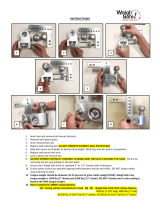 Weigh Safe WS8-2 User guide
Weigh Safe WS8-2 User guide
-
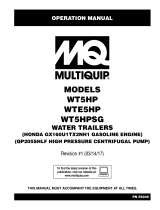 MQ Multiquip WT5HP/WTE5HP Operating instructions
MQ Multiquip WT5HP/WTE5HP Operating instructions
-
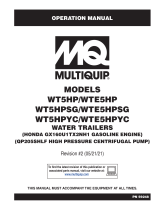 MQ Multiquip WT5HP Series Operating instructions
MQ Multiquip WT5HP Series Operating instructions
-
MQ Multiquip WT5C/WTE5C Operating instructions
-
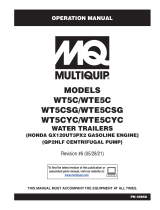 MQ Multiquip WT5C Series Operating instructions
MQ Multiquip WT5C Series Operating instructions
-
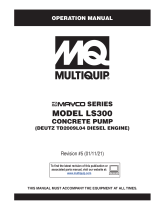 MQ Multiquip LS300 Operating instructions
MQ Multiquip LS300 Operating instructions
-
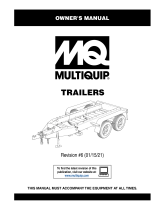 MQ Multiquip Trailers Operating instructions
MQ Multiquip Trailers Operating instructions
-
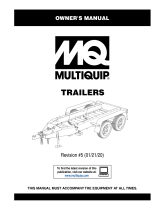 MQ Multiquip Trailers Operating instructions
MQ Multiquip Trailers Operating instructions
















